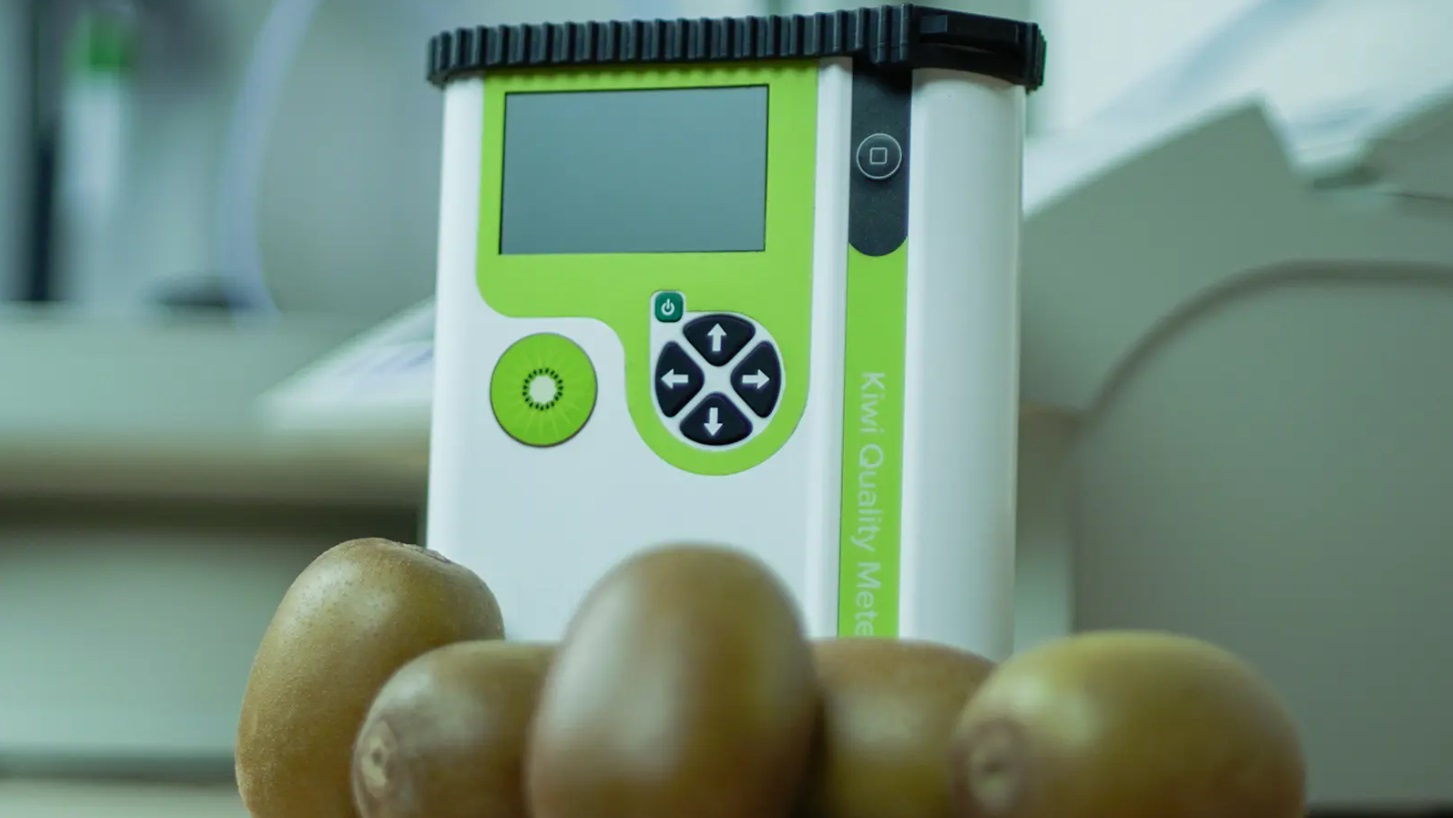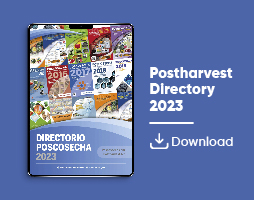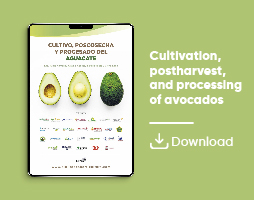Measurements
Optimizing Quality and Shelf Life with Fruit Ripening Programs
Controlled artificial ripening is standard industry practice for fruits after long-distance transport and storage to prevent losses by meeting retailers? requirements. Fruit ripening is a highly coordinated, complex developmental process involving biochemical, physiological, and organoleptic changes. A ripening program that wants to optimize fruit quality to get the desirable color, flavor, and taste must consider various factors. Find out more about how ripening programs achieve their aim.
24 November, 2023
Controlled artificial ripening is standard industry practice for fruits after long-distance transport and storage to prevent losses by meeting retailers requirements. Fruit ripening is a highly coordinated, complex developmental process involving biochemical, physiological, and organoleptic changes. A ripening program that wants to optimize fruit quality to get the desirable color, flavor, and taste must consider various factors. Find out more about how ripening programs achieve their aim. Understanding Ripening Patterns in Fruit Ripening ProgramsThe ripening process in fruits involves the development of many quality parameters, as described below. - Color: Most fruits are green when unripe, and as they ripen, they lose chlorophyll and accumulate more carotenes and anthocyanins that give each fruit its distinct color. - Texture: The fruits become less firm and grow softer, which needs to be monitored closely since excessive softening during ripening results in spoilage during subsequent storage and transport. - Taste: Fruits become sweeter and less sour due to increased sugars and decreased organic acids. - Flavor: Volatile compounds determine aroma and, along with taste, give each fruit and cultivar its unique flavor. There is more than one way that fruit ripening proceeds, and it is crucial for their supply chain and determining post-harvest management. Climacteric vs. Non-Climacteric FruitsRipening in fruits is divided into two categories climacteric, which is ethylene-dependent and can ripen after harvest, and non-climacteric fruits, which are ethylene-independent and do not ripen after harvest. Recent research shows that the distinction between the ripening process can be blurred. Both processes can co-occur in some species and cultivars. For example, a cross of climacteric Cantaloupe charentais melon with a non-climacteric variety produced a melon predominantly climacteric but with non-climacteric processes also occurring. All fruits follow similar growth patterns in terms of size. During ripening, the two groups differ in their physiological and biochemical processes. Climacteric fruits accumulate starch in the initial stage of the maturation period. Then, a sharp increase in fruit respiration triggers the production of ethylene, a phytohormone that ripens the fruits. During this time, the starch is converted to sugars, and there are associated changes in color and texture. Climacteric fruits are harvested once they are fully mature but before ripening. They can be stored in suitable controlled atmospheres and ripened artificially. Several climacteric fruits will not start ripening until they are plucked like the avocados. Mature apples and pears that take weeks to ripen on the tree will start the ripening process immediately when plucked, so suitable storage is necessary until they are ready for retailing. Non-climacteric fruits have a different ripening pattern. Instead of starch, the fruits begin accumulating sugars during maturation. There is no increase in respiration or subsequent ethylene production. Phytohormones, such as auxins, abscisic acid, gibberellins, and brassinosteroids, are involved in ripening. Since no ripening is possible after harvest, non-climacteric fruits must be allowed to ripen on the trees. Elements of a Ripening ProgramFruit ripening programs aim to achieve uniform ripening of fruits. The ripening is not uniform if fruits are brought out of cool storage and kept at room temperature. Applying calculated amounts of ethylene gas to ripening fruits under a controlled atmosphere achieves uniform ripening with better fruit quality development. Some of the factors that ripening programs focus on are discussed below. 1. Choosing mature fruits: Fruits treated in ripening programs should be fully mature to develop fruit quality. Non-climacteric fruits must be harvested when completely ripe. Climacteric fruits undergoing ripening programs must be harvested at the proper maturity. For example, tomatoes must be harvested when at least 40 percent of fruit development has occurred to get the correct quality. Even if immature fruits ripen, flavor and sensory parameters are not optimum. Taste is affected as immature fruits have less starch and dry matter accumulation. Moreover, ripening immature fruits requires higher concentrations of ethylene and longer exposure times. 2. Ethylene concentrations: Artificial ethylene is used in ripening programs instead of other chemical options, as it is safe, has no adverse effects on peoples health and is cost-effective. The concentrations of ethylene gas required for each fruit and cultivar will be different and are established by research. The recommended levels and duration for each ripening stage should be used and monitored, see Table. 3. Proper temperature: The optimum temperature during ripening and later during storage is species-specific; see Table. Fruit temperature determines ripening and speed since higher temperatures raise respiration rate and ethylene production. Therefore, people must monitor and control the temperatures in the ripening rooms or cells. Fruits will also generate heat during respiration and ripening, which must be removed. 4. Humidity: Most fruits need a relative humidity of 90-95%. Lower humidity levels will result in fruit transpiration and weight loss. Humidifiers filled with clean and safe water can be used to maintain humidity. 5. Oxygen/Carbon Dioxide Levels: Fruits use oxygen in the air when they respire and release carbon dioxide. Therefore, levels of the two gases should be monitored and controlled. In the absence of oxygen, anaerobic respiration sets in, spoiling fruits. Carbon dioxide levels above 1 percent retard ripening in most fruits. 6. Air circulation: To ensure proper oxygen and carbon dioxide levels in ripening rooms, good circulation must be maintained through ventilation. Fans can ensure air circulation so ethylene is distributed evenly and carbon dioxide accumulation doesnt occur. 7. Treatment capacity: The type of fruit determines how many can be ripened in any room or cell. Fruits that generate more heat during ripening, like avocados and bananas, will require more space and specific stacking to maintain airflow. 8. Ripening rooms or cells: The ripening rooms or cells used for ripening must be airtight to ensure the gas concentrations and relative humidity can be maintained at optimum. It will ensure less use of ethylene and its costs. Similarly, insulating the chambers ensures easier control of temperatures and less energy use. 9. Checking the ripeness: When fruits arrive, their ripeness should be tested. Once ethylene treatment is started, the ripeness is tested every day. The temperatures are kept high initially, then gradually reduced and stored at lower temperatures to extend shelf life. 10. Sorting: Ripe fruits are sorted using imaging or other quality sensors to check for internal and external damage. Spoilt fruits are culled; unripe fruits are removed and go through the ripening program again. The checking and sorting ensures that all fruits are ready to eat once they leave the ripening facility. 11. Monitor and control the environment: It is recommended that ripening rooms and cells are inspected three times each day, especially for the concentrations of the three gases-ethylene, oxygen, and carbon dioxide. Using precision devices is necessary for this purpose. Best Method of Monitoring the Controlled AtmosphereSeveral devices are available to monitor ethylene, oxygen, and carbon dioxide. They have miniaturized complex technology into small tools, which are easy to use in ripening facilities without elaborate training. For example, the F-960 Ripen It! Gas Analyzer manufactured by Felix Instruments Applied Food Science can precisely measure levels of all three gases in real-time. However, to avoid occupational dangers in rooms from excessive carbon dioxide accumulation, fixed devices that can be used remotely are also a favorable solution, for example, the F-901 AccuRipe & AccuStore. The F-901 measures the three gases, temperature, and relative humidity, and helps control all the factors in the ripening facilities. Precision tools such as these make it possible to deliver fruits of suitable quality and reduce food waste.




 Applications.png)







